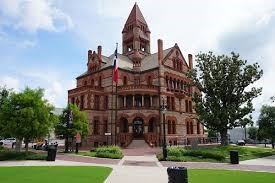
Over the years I have accumulated several county history books, many telling stories of Northeast Texas. It is amazing that much of the history in one county, spread into one or more adjacent counties. Settlers may have located in isolated areas, but they managed to hear the latest news.
Once the Republic of Texas became annexed by the United States and renamed the State of Texas, one of the earliest tasks was to create counties in the vast regions of Texas. Settlers hurried into the state, wanting to claim the good land for farms, and begin a new life.
But those good farms were not free; the new owners had to pay taxes to the county where they chose to settle.
Texas was land rich but nearly destitute of funds to operate the new government. The legislature frantically worked to divide the unclaimed lands into counties. Two of the early counties created were Hopkins and Hunt. Hopkins County came into existence on March 25, 1846. Eighteen days later on April 11, 1846 Hunt County became the new county west of Hopkins.
Based on information in “A History of Hopkins County, Texas,” written and published by Gladys St. Clair, Hopkins County was named for one of three men of the Hopkins family. Yet she does not identify which of the brothers. Evidently part or most of the family moved into the area now known as Hopkins County in the winter of 1843/1844. As many early settlers did, the family came from Clarksville in Red River County. They followed the Middle and Southern branches of the Sulphur River into Hopkins County.
When the Act to Create the County of Hopkins was enacted in March 1846, James E. Hopkins was one of the five men appointed commissioners to find the center of the new county. The commissioners chose two sites, both within a three-mile radius of the center. Once the sites were located white male citizens gathered to select the county seat, to be named Tarrant in honor of Indian fighter General Edward H. Tarrant.
Ms. St. Clair mentioned that David Hopkins recently arrived from Clarksville. His brother Eldridge and cousin Eli were also active in the development of the county.
Eldridge was noted for killing three panthers on his way from Tarrant to Pleasant Hill. On another occasion the men of Tarrant formed a Masonic Lodge. With no stagecoach available, Eldridge took the initial report to Austin on horseback in 1851. In August 1861 Joslin Hopkins joined the Captain James W. Bruce Company (CSA) from Hopkins County.
Finally, Ms. St. Clair included the obituary of Mrs. L. D. King. She was the daughter of Eldridge who suffered long before her death in 1904. At the time of her funeral her cortege in 1904 the length of mourners was the longest ever in Sulphur Springs.
“A History of Hopkins County, Texas” is typical of countless numbers of county histories published in the past. Almost all writers include their biases, the oral histories taught them. Ms. St. Clair did provide documentation of her work. However, as all writers of that time period did, much that was unpleasant was omitted.
However, Hopkins County has one of the best genealogical and historical collections I have ever seen. Without a doubt there are at least ten people over there that can give a Hopkins descendant an accurate account of the Hopkins family. Hopkins County is extremely proud of its past.
